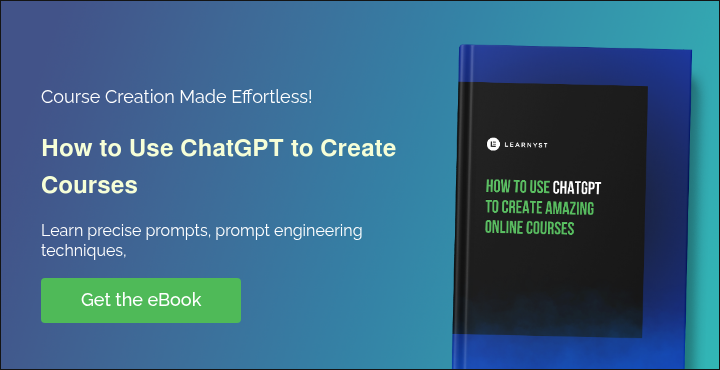6. Select the Right Online Course Platform
Once your content is ready, you’ll need a platform to host and sell your course. Choosing the right platform is one of the most important steps—it’s where your students will learn, interact, and pay for your course.
Look for a platform that offers:
-
Ease of Use: You shouldn’t need tech skills to get started. The platform should be simple and intuitive.
-
Content Hosting: It should support video uploads, PDFs, quizzes, and assignments—everything you need to deliver a great learning experience.
-
Your Own Website & App: A branded experience makes your course look professional and trustworthy.
-
Built-in Payment Options: The platform should handle payments smoothly so you can earn while you teach.
Recommended Tool: Learnyst
Learnyst is designed specifically for educators and course creators. You can create and launch your online course in minutes, with your own branded website and mobile app, built-in marketing tools, and secure payments. Everything you need, all in one place.

7. Upload and Organize Your Content
Now that you’ve picked your platform, it’s time to bring your course to life.
Start by uploading all your course materials—videos, PDFs, audio lessons, slides, or anything else you’ve created. But don’t just dump everything in. Organize it in a way that makes sense for learners.
Here’s how:
-
Arrange lessons in a logical order – Start with the basics, then gradually move to advanced topics.
-
Add quizzes and practice exercises – This helps learners stay engaged and test what they’ve learned.
-
Set access levels – Offer free previews, paid lessons, or time-limited trials to attract more students and give them a taste of your teaching.
A well-organized course feels professional, keeps learners motivated, and encourages them to complete it. You’re not just uploading files—you’re building a complete learning journey!
8. Set Pricing and Payment Plans
Pricing your course the right way is key to attracting students—especially when you’re just starting out.
Start by thinking about your audience:
Are they students with a limited budget? Busy professionals willing to invest in upskilling? Pricing should match what your learners can afford.
You can choose from a few popular models:
-
One-time payment – Great for complete courses. Students pay once and get lifetime access.
-
Monthly subscriptions – Ideal if you’re offering ongoing content or access to a learning community.
-
Free trial lessons – Let learners explore your teaching style before committing. This builds trust and boosts enrollments.
Fun Fact: Over 60% of learners prefer courses that offer flexible pricing and payment options.
So, the more choices you give, the easier it is for people to sign up!
9. Promote Your Course
Now that your course is ready, it’s time to get the word out.
Promotion is how you grow your reach and get learners to sign up. Don’t worry—you don’t need a big marketing budget. Start with the tools you already use:
-
Social Media – Share tips, behind-the-scenes clips, and success stories on platforms like Instagram, Facebook, or LinkedIn.
-
Email Marketing – Send regular updates to your contacts. Offer early-bird discounts or free lessons to attract sign-ups.
-
WhatsApp Broadcasts – Reach your personal network directly with updates and course links.
Create a short, engaging demo video. Show what students will learn. Share it in relevant Facebook groups, Telegram channels, or LinkedIn communities.
Start a blog (like this one!). Write helpful content on topics like “how to sell courses online” or “how to create an online course.” This brings in organic traffic from Google and helps people find your course naturally.
10. Collect Feedback and Keep Improving
Your course doesn’t end after you upload it—it grows with your learners.
Once students start learning, reach out and ask for their honest feedback. What did they love? What confused them? What would they like more of?
Use tools like Google Forms, in-course surveys, or even a quick WhatsApp message to collect feedback.
Why it matters: Courses that adapt based on real learner feedback perform better, get more referrals, and build lasting trust.
Keep updating your content, adding new lessons, or simplifying complex topics. Stay connected with your students—engage through comments, emails, or live Q&As.
Great course creators don’t stop at launching—they evolve. That’s what sets you apart.
Ready to Launch? You’re Closer Than You Think
Starting your online class might seem overwhelming at first, but once you break it down, it’s all about taking one step at a time. From picking your topic to uploading your first video, each step gets you closer to sharing your expertise with the world.
And here’s the best part: you don’t have to do it alone.
With Learnyst, you get everything you need to create, manage, and sell your online course—all under your brand.1. Host video lessons, PDFs, and quizzes
2. Launch your own website and app—no coding needed
3. Accept payments globally
4. Engage your learners with live classes, communities, and analytics
Thousands of educators, trainers, and creators trust Learnyst to run their online academies. Now it’s your turn.
Start your free trial and turn your knowledge into income today.
-1.png)
-1.png?width=699&height=393&name=Twitter%20post%20(7)-1.png)


Leave your thought here